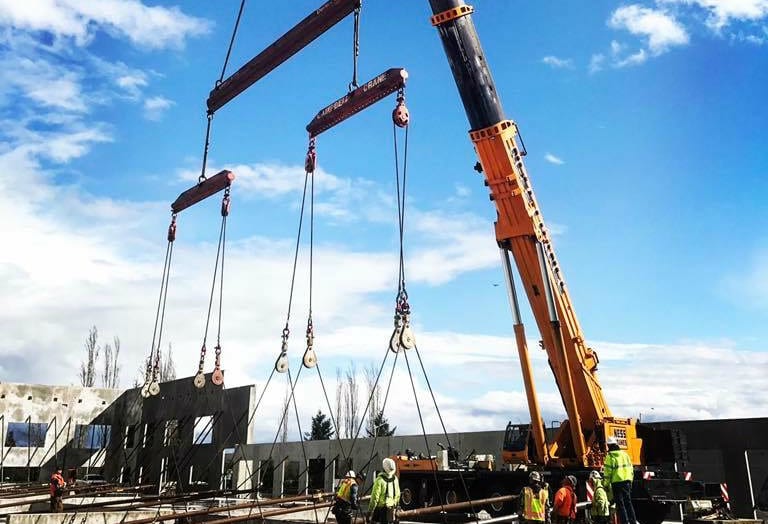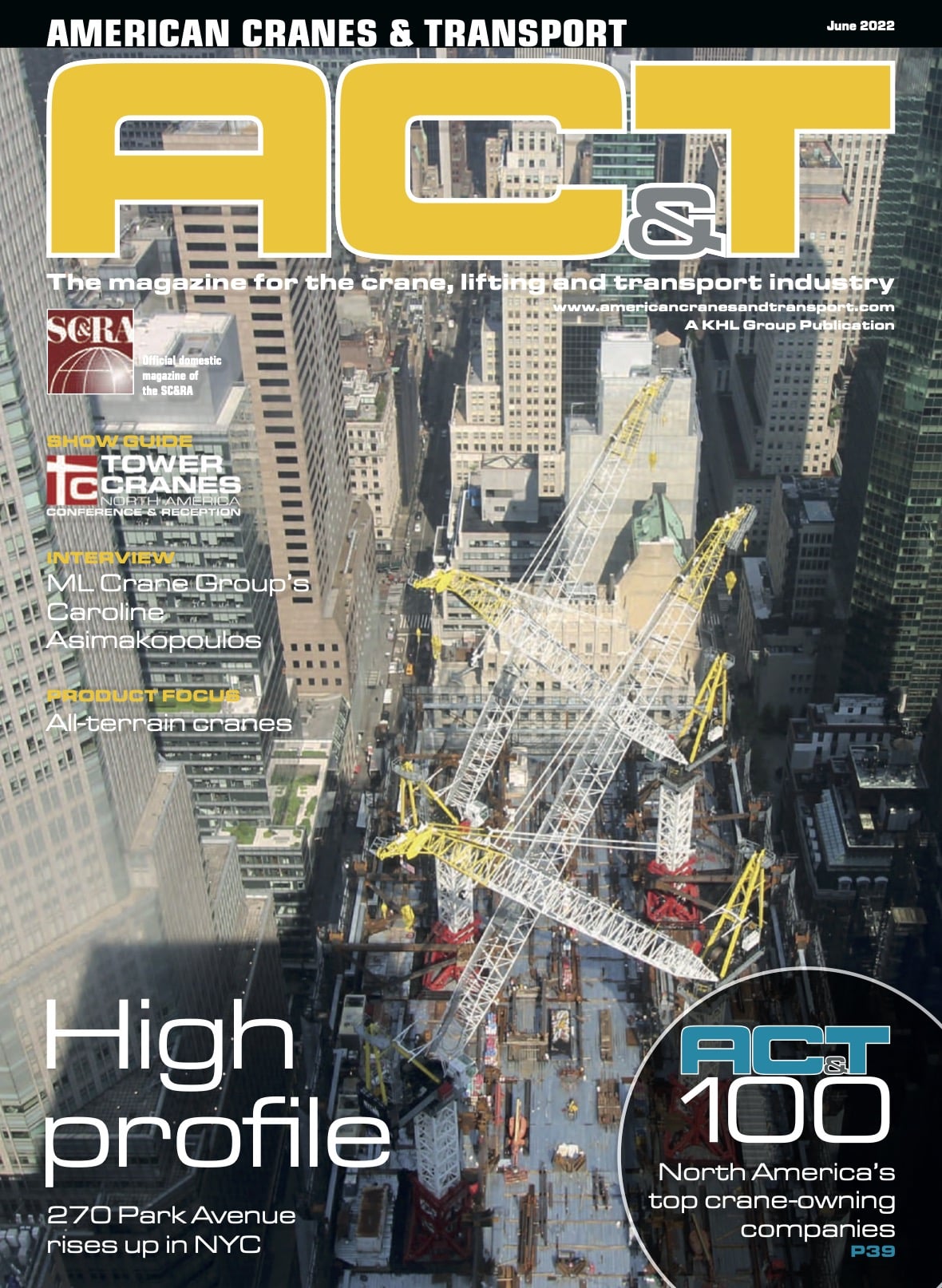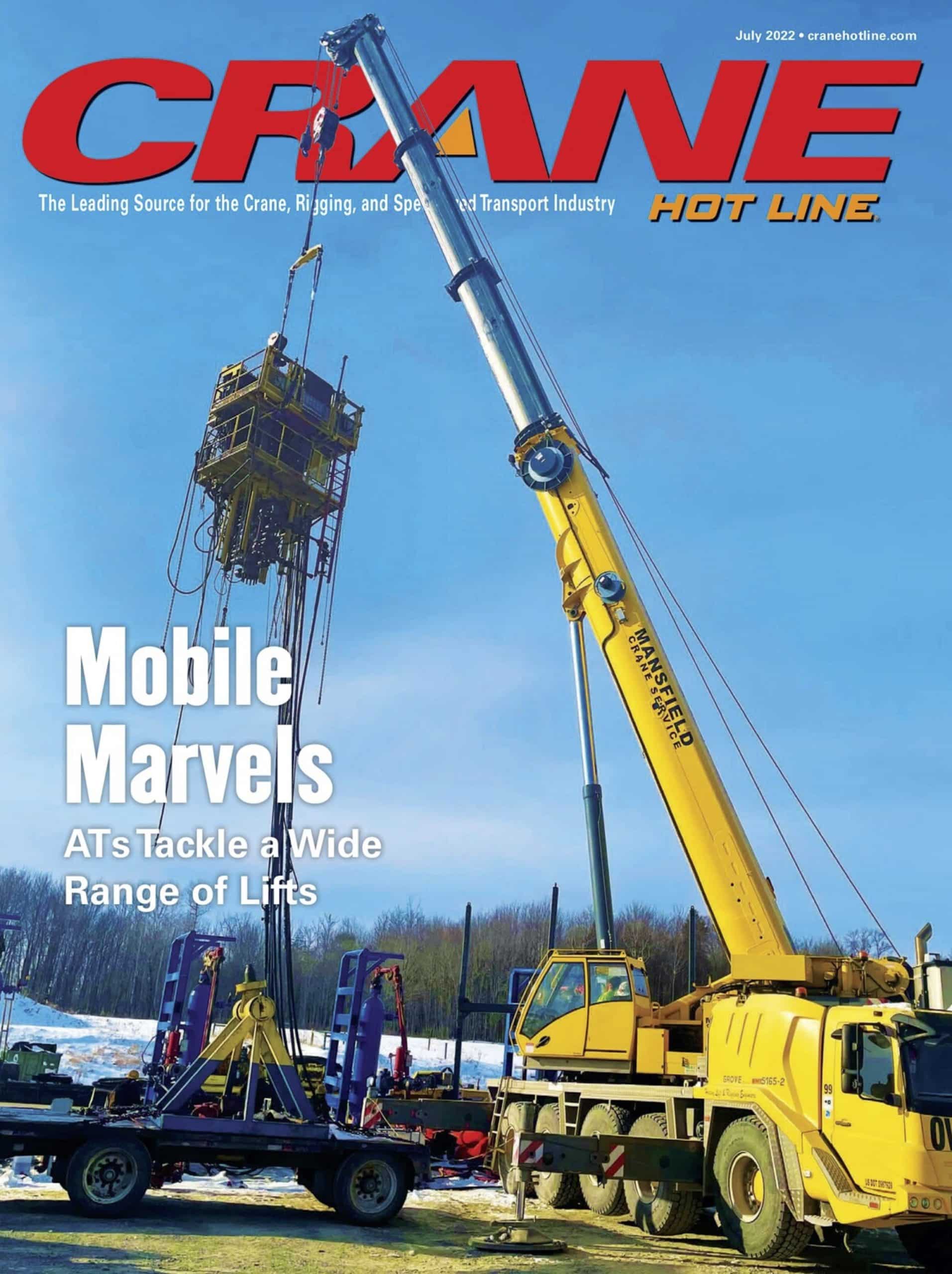Rigging services play a critical role in the safe operation of cranes for lifting loads. Most objects lifted by crane rigging are fundamentally the same. Shape, weight, and rigging may vary, but the loads always live under the hook.
Getting rigging services right requires mathematics, geoengineering, and mechanical information. To ensure teams understand each project, riggers outline the requirements and plan for lifting using a crane and components.
Several interrelated, complex characteristics of a load project are measured and considered during crane rigging:
The Load Details
It’s crucial to understand the specific details of the load to be transported. Key characteristics of each load include load weight, load dimensions (length, width, depth), the center of gravity, lift/sling points, pickup ratios, location radius, lift height, total weight (of the load and all accessories), and crane capacity. Using a crane load chart, riggers will use the load details of the project plan to identify the appropriate machine for the project, based on characteristics such as crane capacity, length of jib, outrigger spread, and load, ground-bearing capacity, counterweights required, crane weight, crane make and model, and ground conditions. In addition to having the right equipment, crane rigging involves working with geotechnical engineers to ensure the ground can support the crane’s load.
Crucial information for the rigging services plan includes the following characteristics of the load:
- load weight
- load dimensions (length, width, depth)
- center of gravity
- lift / sling points
- pickup radios
- location radius
- lift height
- total weight (load and all accessories)
- crane capability
The load details of the project plan will be matched against crane capacity information. A crane load chart is used to identify the appropriate machine for the project, based on several characteristics:
- capacity
- length of jib
- outrigger spread and load
- ground bearing capacity
- counterweights required
- crane weight
- crane make/model
- Ground Condition
In addition to having the right equipment, crane rigging involves working with geo-technical engineers to ensure the ground can support the load and the crane. More specifically, the area must meet these criteria:
- the ground, if back-filled, was compacted to provide a solid surface
- the area has no voids or underground services that will weaken the surface
- adequate space is available to extend outrigger jacks and beams
- load rigger mats are available if hydraulic mobile cranes are used
- access roads and final load location can accommodate the load weight
- any large trees or buildings are noted along the project route
Developing a Rigging Plan
With the project, equipment, and location specifications outlined, our rigging services teams can create a rigging plan. The plan will illustrate all connection points, forces to be applied, and the project’s general approach. The rigging plan is a detailed drawing showing the configuration of all load-lifting points. It also provides information about the slings, shackles, ropes, blocks, and beams used during the project. Details gathered earlier in the planning process are incorporated into the rigging plan, including the load’s center of gravity, any recommended lifting gears or slings, and lifting capacity. Riggers will also consider weather conditions, such as wind, temperature, and visibility when creating the plan.
Weather Conditions
Wind, temperature, and visibility can have an adverse effect on crane lifts and are considered during planning.
- For example, wind gusts of more than 15 miles per hour can cause postponement or cancellation.
- Temperatures below 10 F can impair crane hydraulics.
- Rain, fog or snow can negatively affect the visibility of the boom tip, operator, or the load.
Communication and Training Plan
Putting a communication and training plan in place for the site can improve project safety. This plan includes direction for:
- a system of signals the team knows how to use
- individual roles training
- a process for communicating across roles
- how signalers will be identified
- warning systems for keeping lift areas clear of non-essential personnel
The science behind crane rigging establishes good practices and correct lifting methods, showing how loadings can change significantly with only a few modifications. When large objects are moved efficiently and safely with minimal manual handling, major accidents can be avoided.
But planning and good communication are also key elements of good rigging services.
Successfully controlling lift operations and using lift equipment safely takes management commitment, team competence, and appropriate resources.
Promoting Communication and Training
Planning for effective communication promotes safe rigging services. Successfully controlling lift operations and using lift equipment safely requires commitment, competence, and communication.
At NessCampbell Crane + Rigging, we understand the science behind crane rigging so that we can complete your project safely and effectively. Call our Portland office today at (503) 283-3111 to discuss your crane and rigging needs.





